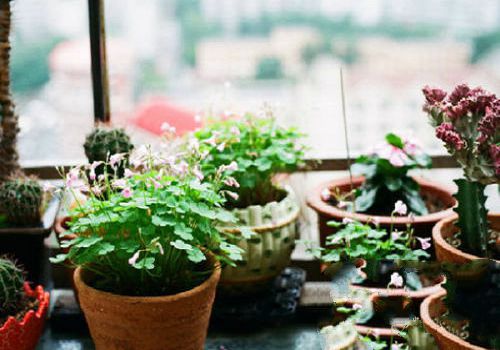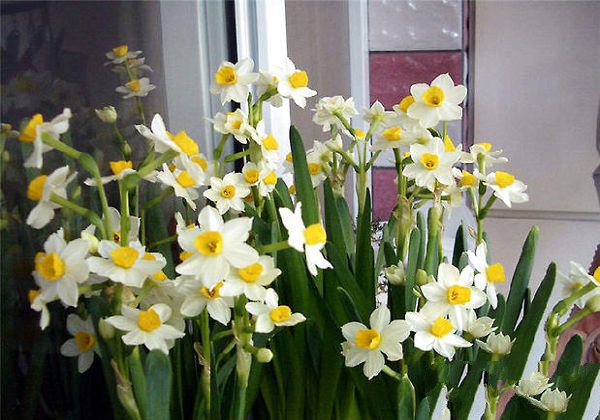A complete set of summer flower maintenance tutorials should be carefully taken.

The hot climate and increased rainfall in summer is the exuberant period for the growth and development of most flowers, and it is also a good time for cutting flowers and trees, but this season is also a period for the occurrence of a large number of diseases and insect pests, so the maintenance of flowers should be more careful.
1. Watering frequently
The temperature is high in summer and the water evaporates quickly, so the potted flowers should be watered in time. However, different flower varieties have different characteristics and different requirements for water. Flowers that like dampness, such as daffodils, tortoise-backed bamboos, calla lilies, etc., need plenty of water. Most flowers like wet flowers, such as Milan, jasmine, oleander, mulberry and so on, are generally watered once in the morning and once in the afternoon.
2. Lighting and shading
The summer weather is hot, the sun is strong, which is not conducive to the growth of flowers, especially flowers in the hot sun for a long time, it is easy to be damaged or die, of course, some flowers like the sun, can appropriately extend the sunshine time. Therefore, it should be treated differently according to the sex of different flowers in summer. Flowers that like light, such as poinsettia, variable leaf wood, pomegranate, Milan, figs, rose, Fusang, Magnolia, etc., can be preserved in sunny places, but should also be properly shaded when the sun is too strong. Such as Milan, Prynne, Fusang, chrysanthemum and so on. For orchids, hairpins, southern stars and camellias, they need to be maintained in low light or astigmatism with good ventilation. At the same time, we also need to give shade to flowers to cool down and prevent heat.
3. Pay attention to ventilation
When the temperature exceeds 30 ℃, indoor flowers should pay attention to ventilation, open the windows and let fresh air flow into the room to cool down and prevent heat.
4. Fertilization
The growth rate of flowers in summer is very fast, so it is necessary to provide sufficient fertilizer for flowers in time. Fertilization also needs to be treated differently according to different flower varieties. General flowers can be treated with mature dilute liquid fertilizer every 7-10 days; for flowers in acid-loving soil, alum fertilizer can be applied every 10 days or so. Be careful not to splash fat and water on the leaves when fertilizing, otherwise it is easy to damage the leaves.
Summer fertilization should be carried out in the evening. Before fertilization, attention should be paid to loosening the soil, which is not only conducive to root absorption of fertilizer and water, but also conducive to the reproduction and growth of microorganisms, promote the accelerated decomposition of organic matter in the soil, and provide more nutrients for the growth and development of potted flowers. Pay attention to watering the next day after fertilization.
5. Pruning
Potted flowers are mainly pruned in summer, such as heart picking, bud wiping, leaf picking, flower thinning, fruit thinning and so on. For some spring sowing grass flowers, when they grow to a certain height, they should pick their hearts in time to promote them to be more branched and blossom.
For some woody flowers, such as kumquat, it is necessary to pick the heart when the branches grow to 15-20 cm, so as to concentrate nutrients, which is conducive to flowering and fruiting.
In summer, adventitious buds often occur on the stem base or stem of some flowers, disturbing plant shape and consuming nutrients, so they should be removed in time.
For some ornamental flowers, such as chrysanthemum, camellia, rose, etc., too many buds should be removed so that the flowers can bloom large and bright.
For pomegranate, kumquat, bergamot and other ornamental fruit flowers, if you need to pick off some young fruits in time, generally short fruit branches only need to leave one fruit, so the fruit will grow big and colorful because of rich nutrition.
In addition, the overgrown branches of the plant should also be cut off in time and reshaped.
6. Reproduction
Summer is the best time for cutting some evergreen flowers, such as Milan, jasmine, rhododendron, Fusang and other flowers can easily survive in this period. For plum blossom, green peach and other flowers, summer is a good time for them to bud, and it is a good time for Magnolia.
Summer is also the best time for some potted flowers to sow. For example, pansy is sown in July and can blossom around National Day. The melon leaf chrysanthemum is sown from July to August and can bloom in the severe winter season with few flowers. Paulownia and carnation are sown from August to September and can blossom in the following summer.
Winter ornamental flowers, such as primroses, Zhu Dinghong and geraniums, should be sown in June and July.
Begonia, rhododendron, camellia, Milan, gardenia, honeysuckle and some tropical foliage flowers are cut in June and July.
Flowers such as calla lilies and rhododendrons can propagate separately in summer.
Flowers such as rose, kumquat, camellia and some cactus can be grafted in summer.
Flowers such as plum blossom, rhododendron, sweet-scented osmanthus and jasmine can be pressed in June and July.
7. Pest control
After the beginning of summer, all kinds of diseases and insect pests do great harm to the growth of family potted flowers.
Germs multiply faster when the weather is too muggy or humid. The prevention and control of insect pests, such as itchy spicy seeds, skin worms and red spiders, often appear at flower gatherings such as rose, rhododendron, five-needle pine and Luohan pine, and a small number can be caught or sprayed with trichlorfon and other drugs.
Pomegranate, yellow poplar and other flowers are mainly harmed by pomegranate and yellow poplar, and trichlorfon can be sprayed or caught manually.
Rose, impatiens and other easily infected powdery mildew, there will be yellow leaves, withered leaves, twisted shoots and other symptoms. We should pay attention to the ventilation and light of flowers, and we can apply less nitrogen fertilizer and more phosphorus and potassium fertilizer. Plants that have just contracted the disease can be sprayed with 15% strychnine, 700 times of water and 1000 times of water.
8. Carefully protect dormant flowers
For example, some succulent plants, cyclamen, Admiralty, paulownia, calla lilies, geraniums, and lotus flowers are dormant or semi-dormant in the high temperature season, when metabolism is slow and growth stagnates. According to the growth characteristics of these flowers, careful care should be taken so that they can get through the dormant period smoothly. Put these flowers in a cool and ventilated place to avoid bright light and Rain Water, otherwise it is easy to rot the roots and even cause the whole plant to die because of the damp soil.
In addition, we should also control watering, otherwise the basin soil is too wet, it is also easy to rot the roots; of course, do not water too little, otherwise the roots will shrink, just keep the basin soil slightly moist. For these dormant flowers, do not need fertilizer, otherwise it will easily cause rotting roots, or even lead to the death of the whole plant.
Related
- What if the leaves of potted flowers turn yellow?
- Florescence Control of several Flowers
- Anti-freezing technology and post-freezing nursing technology of flowers
- What is the classification of flowers? What are the common methods of flower classification?
- Prevention and control of alkali and acid damage of flowers in courtyard
- Technology of Anti-freezing and restoring growth of Flower seedlings in greenhouse and greenhouse
- How does flower fertilization not hurt the root? Fertilization technology of flowers
- Key points of disinfection in flower greenhouse
- Several pesticides that are banned or used cautiously in flowers
- How to fertilize the flowers that watch the leaves?



